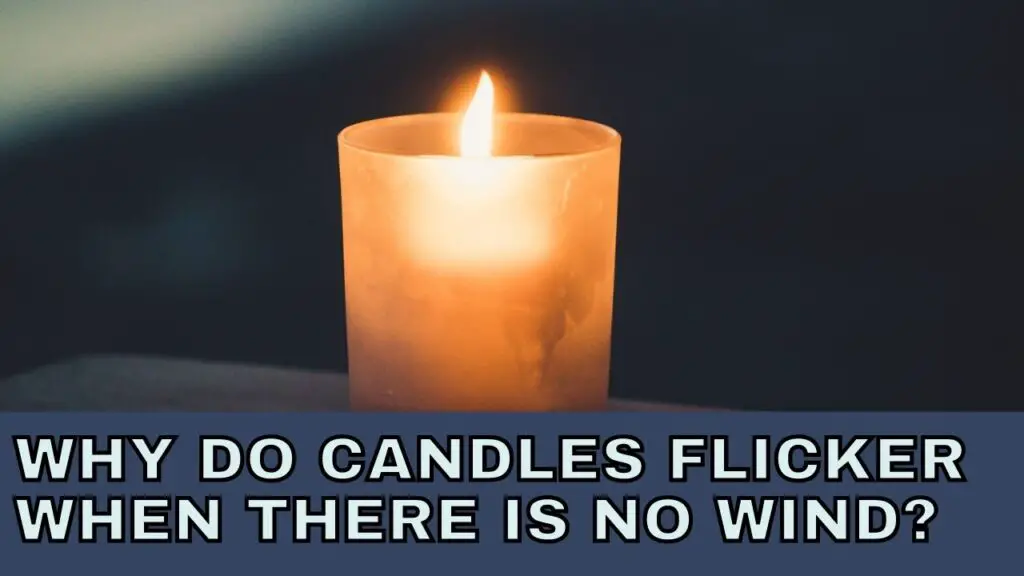
Candles are often used to create a cozy atmosphere in homes, but their flickering can sometimes be a bit mysterious. Have you ever noticed that your candle flickers even when there’s no wind or drafts in the room? Here’s why that happens.
The Physics of Candle Flames
A candle’s flame is made up of several parts. The core of the flame is the luminous zone, which is the bright, glowing part that can be seen. Surrounding that is the non-luminous zone, which is made up of gases like carbon dioxide and water vapor. Then there’s the outermost part of the flame, which is the mantle. This is where the wax vaporizes and the heat is released.
All these different parts of the flame react differently to air currents, which is why the flame flickers. The luminous zone is the most sensitive to air currents, so it will respond quickly when the air moves. The non-luminous zone is less sensitive to air currents, so it will move more slowly. The mantle will move the least, since the heat it releases is heavier than the air.
Why Do Candles Flicker When There Is No Wind?
So why does a candle flicker even when there’s no wind or drafts in the room? It’s because the air around us is always moving, even if it’s too light to feel. The air is always circulating, and that can cause the flame to flicker. It can also be affected by changes in temperature, as warm air rises and cool air falls.
Another reason that candles may flicker even when there’s no wind is that the wick in the candle is not perfectly straight. If the wick is crooked, it can cause the flame to flicker and move around. This can be caused by a wick that is too short or too long, or a wick that has been bent or twisted.
People Also Ask
What Causes a Candle to Flicker?
The main cause of a candle flickering is air movement, either from a draft or from natural circulation of the air. Changes in temperature can also cause the flame to flicker, as warm air rises and cool air falls. A crooked wick can also cause the flame to flicker and move around.
Why Does a Candle Flame Move?
A candle flame moves because it is affected by air currents. As air moves around the room, it causes the different parts of the flame to move in different ways. The core of the flame, the luminous zone, is the most sensitive to air currents, so it will move more quickly. The mantle, which is the outermost part of the flame, is the least sensitive, so it will move the least.
What Causes a Candle to Burn Faster?
A candle will burn faster if it is exposed to a draft or if the temperature of the room is too high. A draft will cause the flame to move around and use up the wax faster, and a high temperature will cause the wax to melt more quickly. Using a higher quality wax can also help a candle burn more slowly and evenly.
What Affects the Size of a Candle Flame?
The size of a candle flame is affected by the amount of oxygen in the air, as well as the temperature and the type of wax. If the oxygen levels are too low or the temperature is too high, the flame will be smaller. The type of wax used can also affect the size of the flame, as some waxes burn hotter and produce bigger flames.
So the next time you see your candle flickering even when there’s no wind, you’ll know why. It’s a combination of air currents, temperature changes, and the wick itself that causes the flame to flicker and move. Keeping an eye on all these factors can help keep your candle burning safely and steadily.